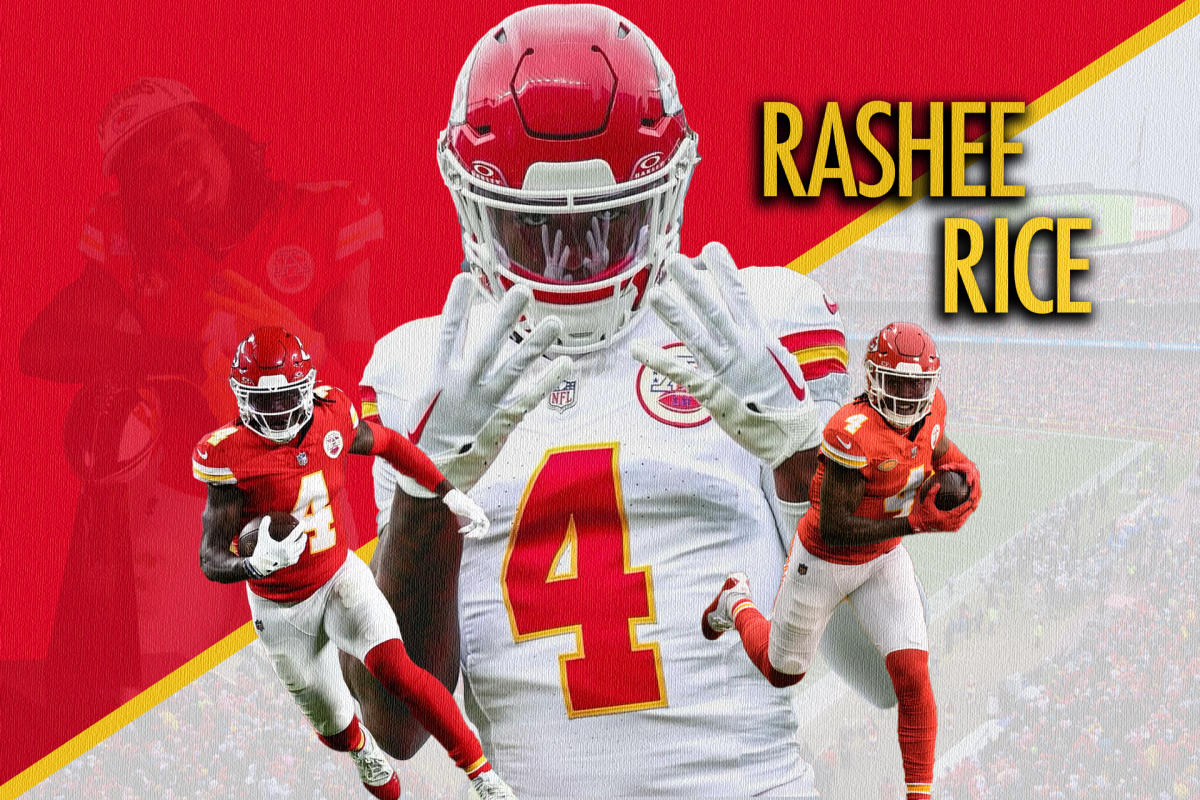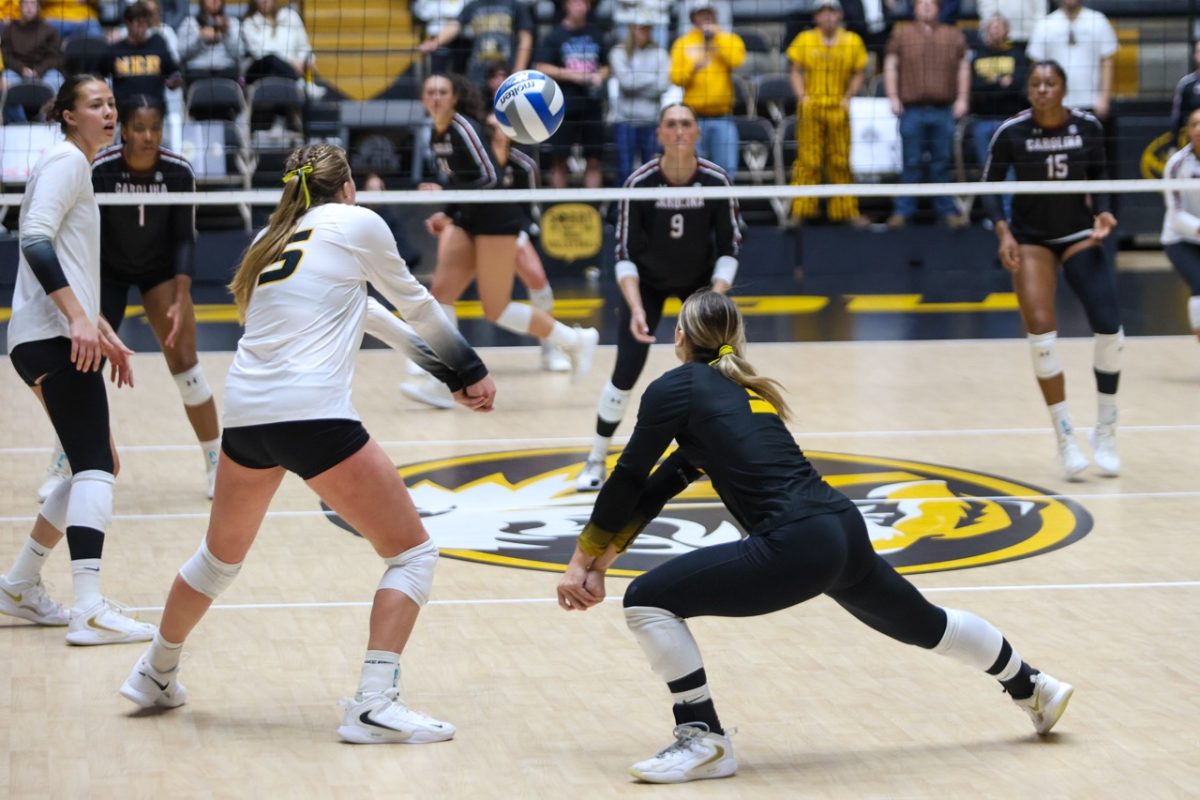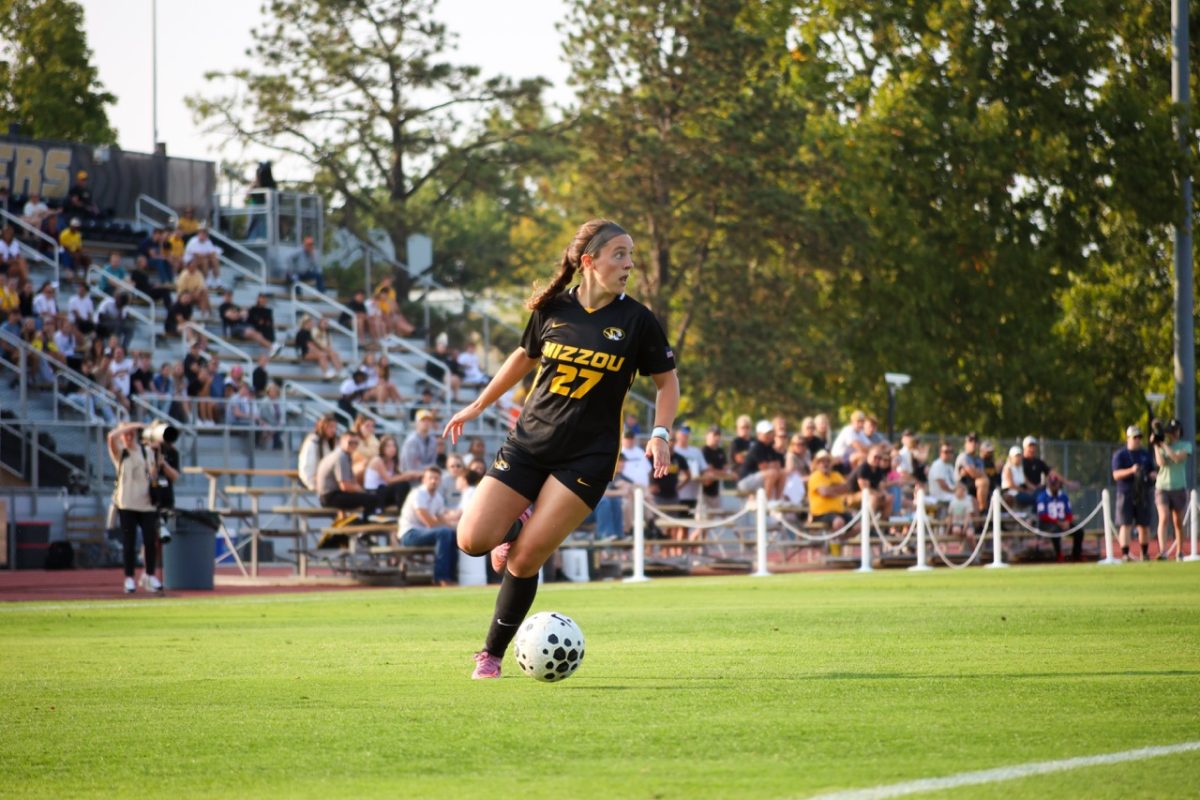At 8:15 a.m. Thursday at the MU Student Recreation Complex, the sounds of metal crashing and rubber squeaking echo from the hardwood floor of court 10. The Missouri wheelchair basketball team scrimmages aggressively while coach Ron Lykins barks orders from one side of the court.
Just below the hoop, sitting in the stands, junior Alex Ashton sits twirling his jersey, his wheelchair beside him keeping him company.
Ashton couldn’t participate in the entire practice because he has a cerebral shunt in his brain, which regulates intracranial pressures. If the shunt doesn’t work properly, like it did Wednesday morning, Ashton is prone to severe headaches and nausea.
“Today, fortunately I wasn’t vomiting, but it still affected me pretty greatly where I couldn’t put it together enough to play,” Ashton said.
His shunt was installed due to a birth defect. A native of Baltimore, Ashton was born two months premature due to his mother’s ruptured appendix. A brain bleed led to the development of cerebral palsy, which affects Ashton when he tries to move his extremities.
“It affects the way that my brain communicates with my muscles,” Ashton said. “My muscles are inherently tighter compared to other people. And I don’t have as much motion or range of control. Like I can’t put my arm as high in the air. You can usually just raise your hand. I have to put effort into it.”
On the court, Ashton is designated as a level one player, which means his disability is one of the most severe in the game. A team can have up to 14 points on the court. The players with the highest functioning disabilities are deemed a four and lowest are scored a one.
Although his disability is one of the most debilitating on the court, Ashton has always competed hard. His mother, a run-away at the age of 14 turned psychiatric nurse practitioner, served as a role model his fighting spirit.
“She made her own success,” Ashton said. “She paved her own way.”
His older brother, Sam, who runs the Brunswick Perry Hall Lanes bowling alley in Baltimore, also served as a role model.
“I always liked the way he went about sports,” Ashton said about his brother, who played baseball in high school. “Failure didn’t exist for him. It wasn’t an option.”
Ashton’s group of friends often played sports together like tackle football, usually designating him as quarterback. Ashton’s disability does allow him to stand but limits his range of walking. He recalled being able to snap off well-aimed passes under pressure.
“I would just start with the ball and we’d do five-second sack,” Ashton said. “They would count to five and if I didn’t throw the ball, I was getting sacked. They were tackling me to the ground. They didn’t take it easy on me.”
Ashton’s favorite sport growing up was baseball, but in middle school he picked up wheelchair basketball and played more in high school.
“(My parents) pushed me to play basketball,” Ashton said. “When I first started, I wasn’t the greatest player. I had a tough disability. Cerebral palsy is hard to play with, but I continued to play. As I kept pushing, I got to go further and further and now I’m here.”
Ashton’s choice to come to Missouri was based on his desire to play wheelchair basketball. His first season, though, didn’t start smoothly. Coming into Missouri at the age of 17, his mother suggested he take a year off. Ashton refused, but struggled with the team’s rigorous practice schedule.
But Alex showed signs of improvement last year, playing in more than half of the team’s games, which earned him a varsity letter.
Alex’s presence on the team is also felt off the court. He always tries to perk up his teammates and finds himself constantly cracking jokes.
“It’s great to have Alex on the team,” senior Dustin Casey said. “He’s such a good guy. He’s willing to work hard. You can tell he loves the game. Alex really wants to improve and get better.”
Earning his varsity letter gave Ashton a boost in motivation. This offseason, Ashton worked to develop his cardio, often spending around 2 1/2 hours a day in the pool to prepare for the tough practice schedule.
“Alex works hard,” Lykins said. “He’s made a major improvement from last year to this year. He worked out over the summer and it shows. He came out in much better condition and his play has improved because of that.”
Ashton expressed excitement for the season.
“I came in this year with the attitude that this is my time,” he said. “It’s time to play now. I’m playing a lot better than I ever have, and it’s interesting to see where that came from, putting all that effort into the offseason.”








